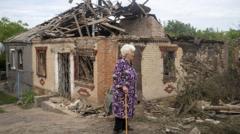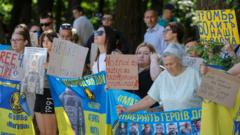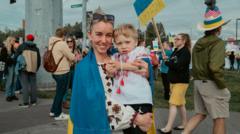In a dramatic turn of events following President Trump's Truth Social post about a homeless encampment, displaced residents like Bill Theodie face the harsh reality of being forced from their temporary homes as the city fast-tracks the removal of such sites.
Trump's Homeless Crackdown: A Personal Encounter at the Encampment

Trump's Homeless Crackdown: A Personal Encounter at the Encampment
The impact of a presidential post on the lives of those experiencing homelessness in Washington D.C.
In a sudden move that has sparked controversy, President Donald Trump posted a photo to Truth Social that encapsulated the precarious situation of a homeless man as he rode through Washington D.C. in his motorcade last Sunday. The photo featured Bill Theodie, a 66-year-old resident of an encampment, sitting in a camping chair by his tent. Trump's caption was clear in its intent, demanding that "The Homeless have to move out, IMMEDIATELY," followed by a series of images. Mr. Theodie, who was unaware of the post until approached for this article, expressed astonishment over being unwittingly thrust into the political spotlight in such a manner.
The president utilized this situation to announce a swift measure aimed at homelessness, declaring a crackdown and implying that the homeless encampments were blight on the city. "We have slums here, we're getting rid of them," he stated vehemently during a press briefing, showcasing the encampments as a pressing issue in his administration’s agenda.
Subsequent investigations by BBC Verify tracked the location of the encampments, revealing that they were situated just a ten-minute drive from the White House. Upon visiting the site, it became evident that local officials were beginning to enforce ejections, warning residents like Theodie that their time was up. Having lived at this site for years, Theodie highlighted the lengths he and others went to maintain the area’s cleanliness, emphasizing that their existence was not one of choice but of necessity.
Following the bulldozing protocol initiated by the presidential directive, Theodie expressed the psychological toll that such forced removals inflicted on individuals like himself. He noted the swift and overwhelming pressure involved, stating, "They didn't come for talking, it was go, go, go." This sentiment echoed among other displaced individuals, revealing a community that felt threatened and marginalized.
Recent statistics suggest that the number of unsheltered individuals in D.C. remains around 800, while 4,300 are in temporary housing. Despite city officials claiming routine removal methodologies, fast-tracked removals have left denizens in profound distress as shelters often exceed capacity and remain stigmatized. As Theodie's situation unfolded, he found temporary refuge in a Virginia motel through the kindness of a passerby. His future remains uncertain, as he navigates finding a new place to set up his tent.
Meanwhile, another encampment resident, George Morgan, faces similar upheaval, revealing the personal costs of displacement and financial instability. As he awaited arrangements in a motel room with his dog, he expressed hope for the future despite his precarious circumstances.
As the controversial crackdown continues, the lives of those experiencing homelessness serve as a reminder of the systemic challenges that persist amid political rhetoric. The stories from these individuals shed light on the complex realities and human cost behind the image projected by a single post on social media.




















